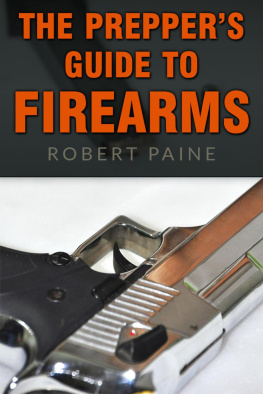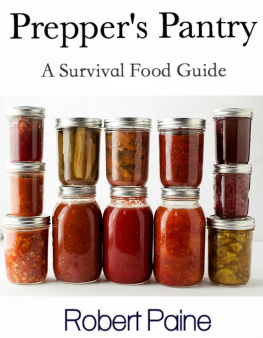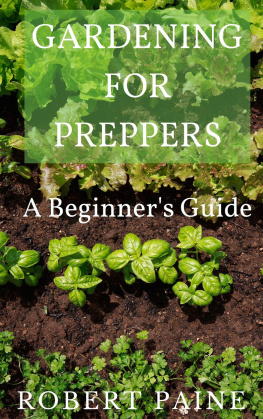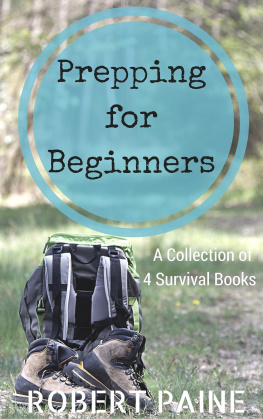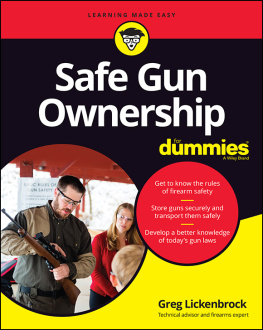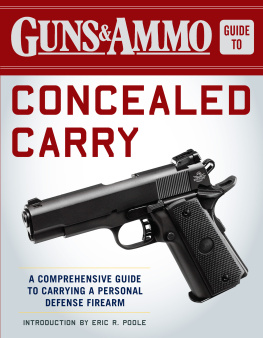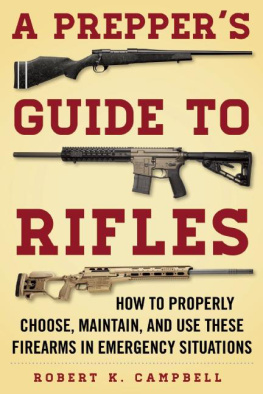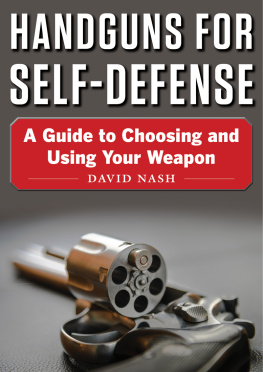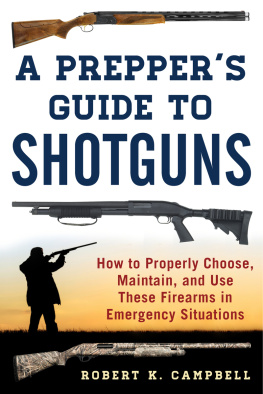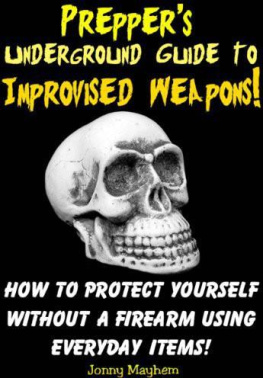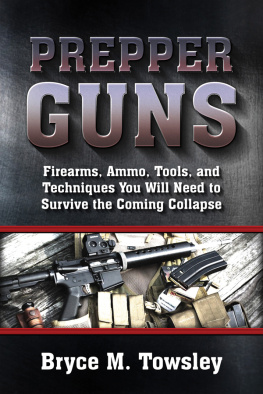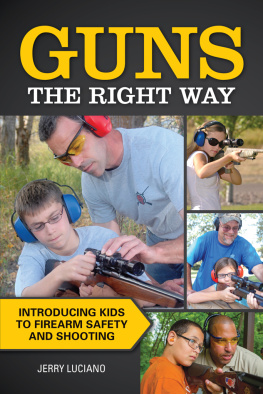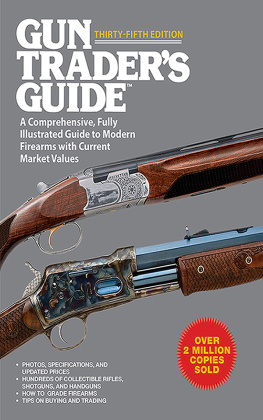The Preppers Guide to Firearms
By Robert Paine
2016
A ll rights reserved. No part of this publication may be reproduced, distributed, or transmitted in any form or by any means, including photocopying, recording, or other electronic or mechanical methods, without the prior written permission of the publisher, except in the case of brief quotations embodied in critical reviews and certain other noncommercial uses permitted by copyright law.
And above all Enjoy!
Also by Robert Paine
The Dead Road
The Dead Road: Vol. 1 - Isolation
The Dead Road: Vol. 2 - Maybridge
The Dead Road: Vol. 3 - Stockton
The Dead Road: Vol. 4 - Survival
The Dead Road: The Complete Collection
Virus Z
Virus Z: Breakout - Episode 1
Virus Z: Sojourn - Episode 2
Virus Z: Ardor - Episode 3
Virus Z: Niagara - Episode 4
Virus Z: Quixotic - Episode 5
Virus Z: The Complete Collection
Standalone
The Prepper's Guide to the End of the World - (A Collection of 8 Best-Selling Survival Guides)
10 Ways to Start Prepping Today
Gardening for Preppers: A Beginner's Guide
Prepping for Beginners: A Collection of 4 Survival Books
The Nomad Prepper: A Guide to Mobile Survival
The Prepper's Guide to Foraging
Bugging In or Bugging Out?
Bug Out Bag Basics
Prepper's Pantry: A Survival Food Guide
Prepping 101: A Beginner's Survival Guide
Prepping with Children: A Family Survival Guide
The Frugal Prepper: Survival on a Budget
The Grid Down Prepper: How to survive when the power goes out
The House by the Lake: A Post-Apocalyptic Novella
The Prepper's Bundle: Even More Survival Guides for Every Situation
The Prepper's Guide to Firearms
The Ultimate Prepper Collection: Survival Guides For Every Situation
The Urban Prepper: A City Survival Guide
Top 10 Prepping Mistakes (and How to Avoid Them)
Are you prepared to protect yourself and your family when the next big disaster comes?
D o you worry what would happen to your family in an emergency? To their safety? Want to protect what you have, but not sure where to start?
If so, then The Preppers Guide to Firearms is perfect for you.
This guide will teach you the fundamental issues around having a firearm for survival. Knowing these will help you and your family survive no matter the situation. This guide covers many different areas of firearms, all in simple terms that even the most novice of beginners can understand and implement, while still containing enough knowledge and tips for even the most seasoned prepper.
In this book, you will learn how to:
- Choose which type of firearm is right for you and your family
- Maintain and repair your firearm, to keep it in top working condition
- When to use your firearm and when to keep it holstered
- Important training and marksmanship drills to help you become a better shooter
- Much, much more!
Survivors are a unique group of people. Some people call us Survivalists, Doomsday Preppers, or Patriots. You may not consider yourself any of those things. Whatever you may want to call yourself, if you're reading this, you are on the first step to helping your family becoming an Emergency Prepared Survivors.
Welcome to The Preppers Guide to Firearms .
Introduction
Welcome, reader. You have chosen to arm yourself, a decision that is not to be made without some serious thought. A firearm is a complicated and dangerous tool in the hands of the unprepared, but to those that understand them and handle them carefully, a firearm is a valuable addition to your collection of skills and equipment. In any prepping or survival situation, having a firearm, and knowing how to use it, will very likely separate the people who survive and thrive from those who dont. Youve made an important first step towards protecting yourself and your loved ones.
This guide will be focusing on pistols, as that will be the most likely choice for your average prepper or family. Of course, there are many other options out there, and if you are a more experienced marksman, you will certainly be able to branch out in your firearm selection. But for the ease of this guide and for the average family or preppers or survivalists, a pistol is going to meet each and every need that they have for a firearm.
For the beginner, this guide will teach you what you need to know so that you can use your firearm without being a danger to yourself and those around you. Once you have reached that level of basic competence, or if you are already familiar with firearms, this guide will go into some depth on training and use of firearms, so that you can continue building your skills.
You need to consider a variety of different factors before you choose your firearm, and you will have many tasks and responsibilities to handle once you finally have it. All of these responsibilities are yours, but you will have this guide to help you along the way. You will be led through the consideration, selection, and purchase of a firearm. You will also be introduced to safety, operation, and how to train and employ the weapon, so that you can use it effectively and safely.
Remember, however, that this is only a guide, and it cannot cover every situation. In the end, you are the one who is going to be making all the important decisions, from which firearm to choose to whether or not to use deadly force in a tense situation. Should you ever be put to the test, it is a brutally simple pass-or-fail, live-or-die evaluation. This guide will not be with you to help you through if and when it happens. It is up to you to train and study the concepts within, until you are fully proficient with your weapon. You have to put in the work.
That being said, let us begin.
Select a Pistol
Budget
Since you have decided to buy a pistol, you need to work out a budget. Not only do you need to set aside money for the weapon itself, but you also need to think of the long-term investment in ammunition and accessories. You will need to be able to buy ammo for regular practice, or you will not have the skill needed to use your pistol when it counts. No amount of quality equipment will make up for that lack of skill. Accessories and spare parts are another expense you have to include.
A good rule is that if you cannot afford the ammo, then you cannot afford that pistol. Consider that you will need to be setting aside ammo for later. After a collapse or a when you enter a survival situation, you will not be able to drive to the store and buy the rounds you need. You can only rely on what you already have, as scavenging will not be a reliable source for very long, if at all. A lot of the ammo out there is going to be in the possession of other people, and they are not likely to give it to youunless you consider incoming fire to be a valid form of ammunition exchange. Make sure that you have plenty for your needs, and remember: the more, the better - no exceptions.
You should have several hundred rounds at minimum, and a few thousand is a much better idea. This might sound like a lot, but consider that over a quarter of a million rounds are fired for every insurgent killed in Iraq and Afghanistan. And that number is coming from highly trained soldiers. For the average Joe, its going to be a higher ration still. A lot of that is training requirements, and automatic and suppressive fires burn through ammo much faster than semi-automatic pistol fire, but it does a good job of showing why you want plenty of ammo and plenty of practice. You can go through a full magazine in just a couple seconds with ease. Practice will reduce the number of rounds you need to fire to get the job done, but you will still want as much as you can get, and you will still need to buy the rounds with which you are training.
Next page
